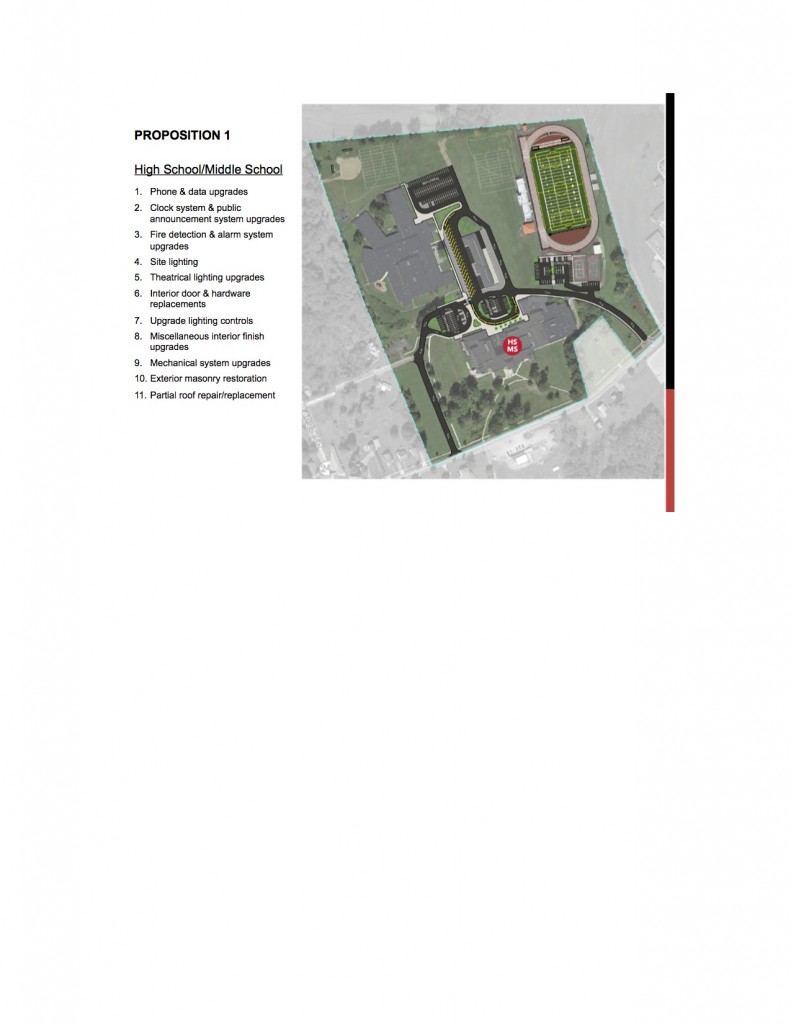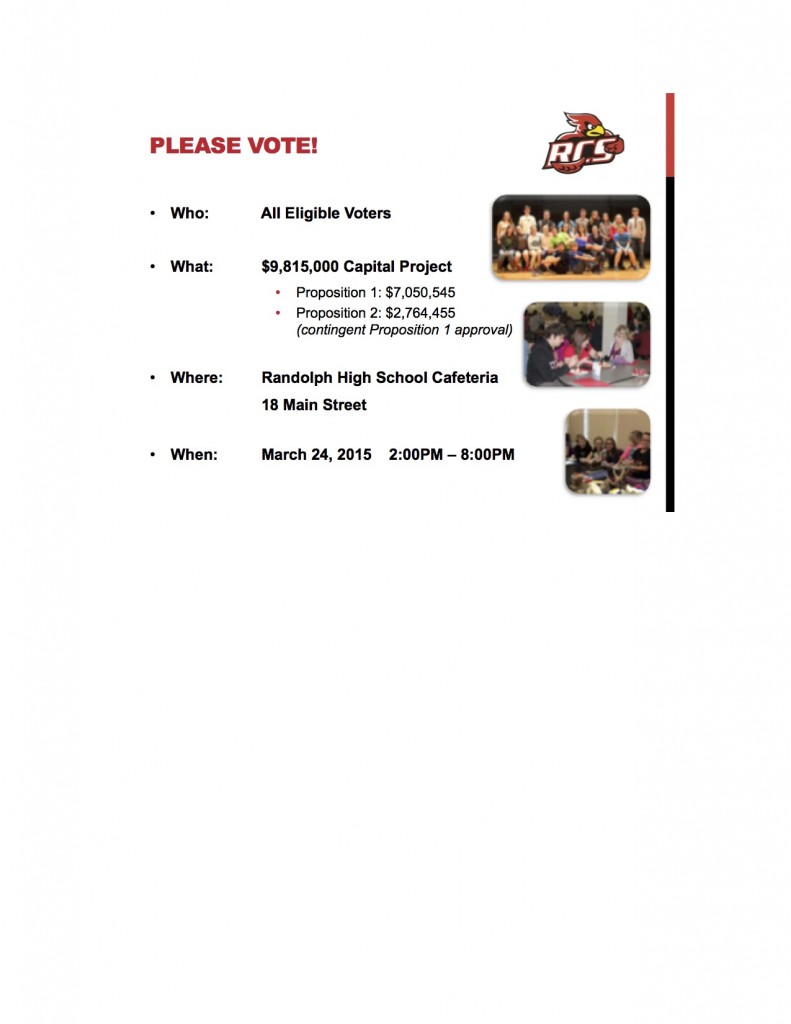Capital Project Questions & Answers
Q. Why is the District having a bond vote?
A. Randolph Central School District is committed to providing a safe learning environment and well-maintained facilities for students and public use. Just as one’s home ages and needs upkeep and repairs to keep it in good shape, so do our schools. Many routine repairs and projects are funded within the annual District budget, with local taxpayers bearing the full cost. Larger work items and safety concerns would have a greater impact on everyone’s taxes if they were to be included in the annual District budget. However, a capital project bond issue results in a much lower tax impact and is a fiscally responsible alternative because the State reimburses a large percentage of the cost and the expense is spread out over a longer period of time.
Q. Why was this work chosen?
A. Every five years, all school districts are required by the State to have a certified Architect review the condition of their buildings and grounds. Recently, our architectural consultant and construction management firm examined the District’s facilities and helped the District to define over $40 million in potential needs. A significant portion of these items are either required by State regulations or were developed to improve safety concerns in the parking areas and with traffic circulation throughout the campus. A District subcommittee studied those items and developed a recommended list of the most critical improvements and safety upgrades.
Q. Why are there two propositions?
A. The Board of Education divided the project into two distinct areas. Proposition 1 is work that pertains to building and safety needs that are high on the list of priorities. The District’s Building and Grounds personnel and the Facilities Planning Committee felt these work items were considered to be “needs”…those items primarily included safety, security and improvements to extend the life of building systems. During the scope definition process, that same committee also identified a synthetic turf field as the highest priority “want”. This work, however, would receive less aid from the State Education Department. Therefore, Proposition 2 was developed separately, primarily due to the difference in the State’s building aid, for consideration from our community.
Q. Why is a synthetic turf field being considered?
A. The concept of a synthetic turf field in Randolph has been discussed for years. The benefits of synthetic turf include significantly increased use by our sports teams, gym classes and by the community; less maintenance time and water usage, and; increased playability even in the most extreme weather conditions. More and more school districts throughout the State are providing synthetic turf fields for their students and their community use. The Board of Education and the Facilities Committee feel the time is right for the voters to consider this option for our students and our community.
Q. How will the project be financed?
A. The project will be paid for by a combination of State Building Aid funding, the District’s cash reserves especially set aside for capital projects and taxpayers’ local share.
Q. Isn’t State Building Aid just my tax dollars too?
A. Yes, it is. The New York State Legislature has given all Districts in the state an opportunity to use tax dollars to enhance their communities through school building improvements and renovations. This is an opportunity to keep some of those tax dollars in our own community, working to improve the educational setting for our children and the public.
Q. If the 1st proposition doesn’t pass, can the 2nd proposition pass?
A. No. Proposition 2 is contingent on Proposition 1 passing.
Q. When will the work take place?
A. It is anticipated that the State Education Department’s approval for the project will be received by early 2016 with the bulk of work starting in the summer of that year. Based on the State’s approval of the project, completion would be expected in 2017.
Q. How will contractors be selected to build the project?
A. The project must be contracted utilizing State of New York competitive bidding laws. Essentially, this requires that each project 1) be divided into at least 4 prime contracts (general construction, mechanical, electrical and plumbing); 2) utilize the NYS Dept. of Labor prevailing wage rate and; 3) be awarded to the lowest responsible bidder. Also, the District and the Project Team recognize the importance of local contractor participation. Therefore, during the bidding process, the construction manager will be actively recruiting local contractors and subcontractors to submit bids to the District.
Q. Who is eligible to vote?
A. Any US citizen that is 18 years old and who has resided within Randolph Central School District for at least 30 days prior to the vote is eligible.
Q. What will it take to pass the vote?
A. A simple majority of the total votes is needed.
Q. Where can I learn more about the project?
A. Please go to the District’s website for the most up-to-date information (www.randolphcsd.org). Also, a public meeting will take place in the High School auditorium on March 18, 2015 and the Capital Project Newsletter will be mailed to each household in mid-March.
Q. How do these propositions affect the district’s overall debt when considering previous construction projects?
A. We currently have 3 bonds on previous projects for which we receive state aid and make annual payments. We have a bond that’s paid in full June, 2018 and carries an annual payment of $1,306,750 with state aid of $1,326,066 annually. We took advantage of refinancing last year, which is why our aid exceeds our payment.
When that bond is paid off in June 2018, this Proposition 1 Project is an annual payment of $543,072 and the state aid we receive will be $513,371, a local share of $29,701.
If Props 1 & 2 both pass, they will carry an annual payment of $810,750 with state aid at $603,522 annually. Both propositions, combined with debt from the other 2 bonds left result in total payments of $2,735,393 with state aid of $2,580,968 and a local share of $154,425 for debt in the 2018-19 school year.


